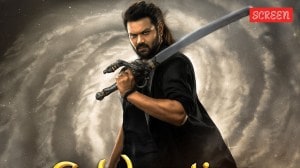Sharma summons governors, political leaders for meeting
NEW DELHI, May 7: In an unusual development, President Dr Shankar Dayal Sharma has called a meeting of governors and leaders of political p...

NEW DELHI, May 7: In an unusual development, President Dr Shankar Dayal Sharma has called a meeting of governors and leaders of political parties together to discuss what should be the role of governors and President when there is no clear mandate as happened in 1996 or in Uttar Pradesh after the Assembly polls last year.
The discussion will be held on June 2-3. What has raised eyebrows in political circles is not the subject of discussion, which has undoubtedly assumed importance in the last year, but the fact of the Rashtrapati having invited party leaders to a conference of governors. The governors deal with assemblies and the President with Parliament and not with political parties.
Political leaders do not recall such a meeting ever having taken place before. It would have been unusual enough for the President to have invited leaders of parliamentary parties. But he is learnt to have sent invitations to political party leaders.
The President’s initiative comes weeks before his term comes to an end. As far as the issue is concerned, it is agitating many, with the country having entered the coalition era. There is the single largest party model which was followed by Sharma himself. He had first invited the BJP to form a government here and not H D Deve Gowda who had lined up a majority support with the help of parties which formed the United Front and of the Congress.
He followed the drill again when he “invited” the BJP (though casually as he had done with P V Narasimha Rao in 1996) before turning to I K Gujral. It was the single largest party (SLP) norm which guided the actions of R Venkatraman in 1989 when he first invited Rajiv Gandhi before giving a chance to V P Singh (who was supported by the Left and the BJP from outside).
This principle was followed again when Chandra Shekhar became prime minister in 1990. It was only when Rajiv turned down the offer and chose instead to support Chandra Shekhar, that the latter was invited to form the government.
However, with the BJP’s failure to muster the requisite numbers in May 1996, questions were raised about the desirability of mechanically inviting the single largest party. It is feared that this can encourage horse trading if the SLP is not able to show the head of State where its support will come from.
Uttar Pradesh Governor Romesh Bhandari did not opt for the Sharma model. In the teeth of tough opposition, he did not invite the single largest party last year after the UP polls, even though the BJP had staked its claim to form the government. Bhandari insisted that the parties must convince him first that they were in a position to swing a government.
There is then the Motilal Vora model, which also negated the SLP principle. Vora chose to invite the SP-BSP combine even though the BJP tally was more than that of the two parties because their alliance preceded the elections and they were in a position to provide stability.
What happens if the UP kind of scenario develops at the Centre, and the parties are not able to cobble together a majority? This is a cause for concern to the political and constitutional pundits. For unlike the states, where the governor can impose Central rule, as Romesh Bhandari did in UP, there is no provision for President’s rule at the Centre.
There is a view that the President — or the Governor as the case may be — can send a message to the legislature directing it to elect a leader who can then be sworn in. And yet another school of thought that the President can swear in an all party, or a “national” government which would function in a caretaker capacity till such times when elections can be held.


- 01
- 02
- 03
- 04
- 05





























